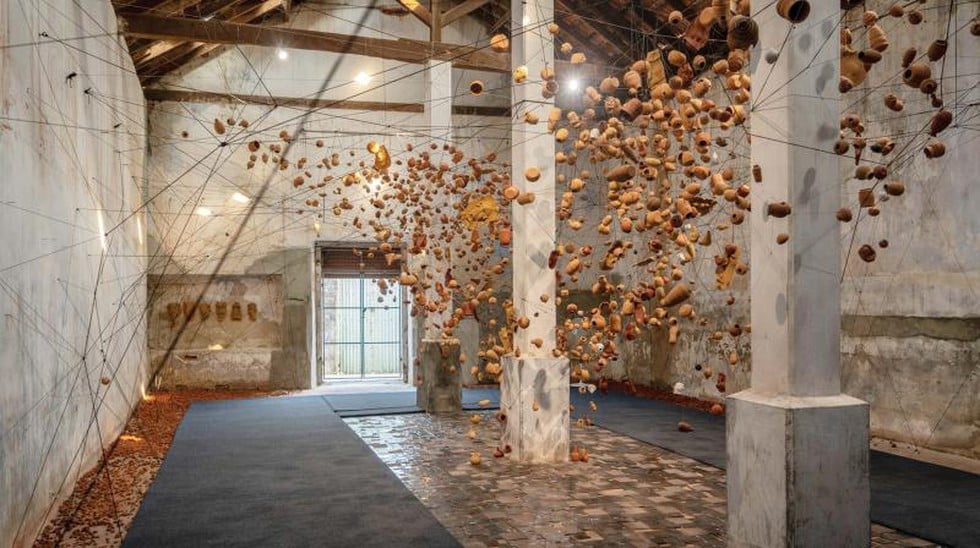About Kochi-Muziris Biennale:
- The Kochi Muziris Biennale was founded in 2011 by Kerala-born, Mumbai-based artists Bose Krishnamachari and Riyas Komu.
- It aims to “create a platform that will introduce contemporary, global visual art theory and practice to India”.
Biennale
- A biennale is an international large-scale showcase of art that takes place every two years at a particular site, centred around a curatorial theme.
- The theme for 2022: “In Our Views Flow Ink and Fire”.
- One of the most prestigious and oldest biennales in the world is the Venice Biennale, which was established through a resolution by the city council in 1893 to celebrate national artistic talent.
- In 2009, a global Biennale Foundation was established with an “aim to create a platform for dialogue, networking, and knowledge sharing among contemporary art biennials around the world”.
Significance of the Art biennale:
- Biennales, often named after the host city, become a reason for local pride, promoting cultural tourism and generating revenue through visitors.
- Biennale is often viewed as recognition of an artists work Frequented by the powerful and the important in art, a
participation in Biennale can open opportunities for future museum exhibitions,gallery representation and acquisitions.
Q1) What is Muziris Heritage Project?
The Muziris Heritage Project is one of the biggest conservation projects in India, where the state and the central governments have come together, with support from UNESCO, to conserve a rich culture that is 3000 years old. The region that forms a part of the heritage project lies between North Paravur in Ernakulam district and Kodungallur in Thrissur district. Muziris was an active port on the west coast of southern India in the 1st century BCE.
Source: Indian Express
Last updated on June, 2025
→ UPSC Notification 2025 was released on 22nd January 2025.
→ UPSC Prelims Result 2025 is out now for the CSE held on 25 May 2025.
→ UPSC Prelims Question Paper 2025 and Unofficial Prelims Answer Key 2025 are available now.
→ UPSC Calendar 2026 is released on 15th May, 2025.
→ The UPSC Vacancy 2025 were released 1129, out of which 979 were for UPSC CSE and remaining 150 are for UPSC IFoS.
→ UPSC Mains 2025 will be conducted on 22nd August 2025.
→ UPSC Prelims 2026 will be conducted on 24th May, 2026 & UPSC Mains 2026 will be conducted on 21st August 2026.
→ The UPSC Selection Process is of 3 stages-Prelims, Mains and Interview.
→ UPSC Result 2024 is released with latest UPSC Marksheet 2024. Check Now!
→ UPSC Toppers List 2024 is released now. Shakti Dubey is UPSC AIR 1 2024 Topper.
→ Also check Best IAS Coaching in Delhi
























